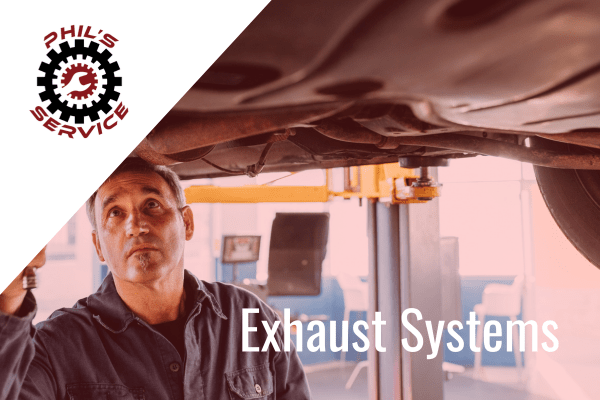What does a full exhaust system include?

In your car, the exhaust system comprises many fantastically interwoven parts working together in discordant harmony to minimize noise from the engine, keep all noxious emissions out of the cabin, and optimize overall performance.
What does a full exhaust system include, exactly? The critical elements of this break are as follows:
- Exhaust Manifold: It collects the exhaust gases from the engine's cylinders and directs them into the exhaust pipes.
- Exhaust Pipes: These pipes carry the exhaust gas from the manifold to the catalytic converter and out to the silencer.
- Catalytic Converter: This feature reduces the amount of harmful pollutants in the exhaust gases emitted into the air.
- Muffler: This device is designed to deaden the engine's sounds. It works by canceling sound waves through its series of chambers and baffles.
- Resonator: Although usually installed together with the silencer, a resonator helps smooth out the exhaust sound when eliminating high-pitched noises.
- Tailpipe: This is the final portion of the exhaust system, piping the gases out and away from the car.
A question car owners have is, "What does a full exhaust system include?" Knowledge of its various parts will enable one to keep the efficiency of the car high and diagnose some of the eventual issues to arise.
A Noisy Muffler
The noisemaker system is essential for the operation of your vehicle and ecological balance. Of course, a loud-sounding muffler is one of the most recognizable phenomena of disturbances in the exhaust system.
Signs of a Noisy Muffler
- Corrosion or Holes: Those are also possibilities with a silencer after some time, where the metal rusts or gets holes that increase the noise level.
- Internal Damage: It might dislodge the internal baffles or chambers inside the silencer or even become internally damaged, causing the silencer to lose its sound-dampening characteristics.
- Exhaust Leaks: These are usually very loud leaks before the silencer.
When this happens, and one starts to notice that their silencer is just getting too loud, take immediate action to get your car to a qualified mechanic who can look at the problem with your exhaust system. A neglected noisy silencer might be further damaged, apart from having a lousy fuel economy, even in dangerous conditions. Routine maintenance will save one from expensive repairs as it checks on the silencer and other exhaust parts, making the car smooth and quiet.
Interested in knowing more about what does a full exhaust system include? Contact our ASE Certified technicians at Phil’s Service for more information about mufflers and to schedule an appointment. Our auto shop proudly serves residents in the community of Killeen, TX , and the surrounding area.
Are you wondering what does a full exhaust system include? Ask the certified technicians at Phil's Service for advice about mufflers.In your car, the exhaust system comprises many fantastically interwoven parts working together in discordant harmony to minimize noise from the engine, keep all noxious emissions out of the cabin, and optimize overall performance.
What does a full exhaust system include, exactly? The critical elements of this break are as follows:
- Exhaust Manifold: It collects the exhaust gases from the engine's cylinders and directs them into the exhaust pipes.
- Exhaust Pipes: These pipes carry the exhaust gas from the manifold to the catalytic converter and out to the silencer.
- Catalytic Converter: This feature reduces the amount of harmful pollutants in the exhaust gases emitted into the air.
- Muffler: This device is designed to deaden the engine's sounds. It works by canceling sound waves through its series of chambers and baffles.
- Resonator: Although usually installed together with the silencer, a resonator helps smooth out the exhaust sound when eliminating high-pitched noises.
- Tailpipe: This is the final portion of the exhaust system, piping the gases out and away from the car.
A question car owners have is, "What does a full exhaust system include?" Knowledge of its various parts will enable one to keep the efficiency of the car high and diagnose some of the eventual issues to arise.
A Noisy Muffler
The noisemaker system is essential for the operation of your vehicle and ecological balance. Of course, a loud-sounding muffler is one of the most recognizable phenomena of disturbances in the exhaust system.
Signs of a Noisy Muffler
- Corrosion or Holes: Those are also possibilities with a silencer after some time, where the metal rusts or gets holes that increase the noise level.
- Internal Damage: It might dislodge the internal baffles or chambers inside the silencer or even become internally damaged, causing the silencer to lose its sound-dampening characteristics.
- Exhaust Leaks: These are usually very loud leaks before the silencer.
When this happens, and one starts to notice that their silencer is just getting too loud, take immediate action to get your car to a qualified mechanic who can look at the problem with your exhaust system. A neglected noisy silencer might be further damaged, apart from having a lousy fuel economy, even in dangerous conditions. Routine maintenance will save one from expensive repairs as it checks on the silencer and other exhaust parts, making the car smooth and quiet.
Interested in knowing more about what does a full exhaust system include? Contact our ASE Certified technicians at Phil’s Service for more information about mufflers and to schedule an appointment. Our auto shop proudly serves residents in the community of Killeen, TX , and the surrounding area.
join Our vip Club
Get Coupons & Specials
Would you like to to hear about our latest offers first? Go ahead try it, you'll get savings sent directly to your phone!




